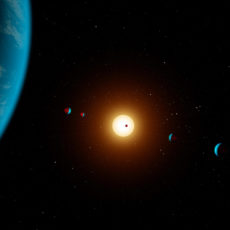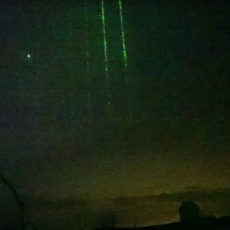
Wasp-121b rains titanium, while Wolf 1069 b is a potentially habitable exoplanet located a mere 31 light-years from Earth. It orbits a red dwarf star in the Cygnus constellation and boasts a similar mass to Earth. Since it orbits sufficiently close to its sun, Wolf 1069 b appears to have kept much of its atmosphere.

The exoplanet completes an orbit of its star within 15.6 days at a distance equivalent to one-fifteenth of the separation between the Earth and the Sun. Wolf 1069 b appears to be relatively cool, resulting in an orange-reddish color, and as a result, the so-called habitable zone is shifted inwards. It receives approximately 65 percent of the incident radiant power of what Earth receives from the Sun, making it potentially habitable to life. One caveat: its rotation is most likely tidally locked to its orbit around the host star, which means the same side always faces the star. In other words, it experiences eternal day while there is always night on the opposite hemisphere.
- COMPUTERIZED STAR LOCATING TELESCOPE: The Celestron NexStar 127SLT offers a database of more than 40,000 stars, galaxies, nebulae, and more. Simply...
- MAKSUTOV-CASSEGRAIN OPTICAL DESIGN: With a large, 127mm aperture, the NexStar 127SLT can gather enough light to see our Solar System and beyond. View...
- COMPACT AND PORTABLE: The ideal telescope for adults and kids to use together, the NexStar 127SLT is compact, lightweight, and portable. It's easy to...
The simulations also reveal a stage of violent encounters with planetary embryos during the construction of the planetary system, leading to occasional catastrophic impacts,” said Remo Burn, Max-Planck-Institute for Astronomy Scientist.






